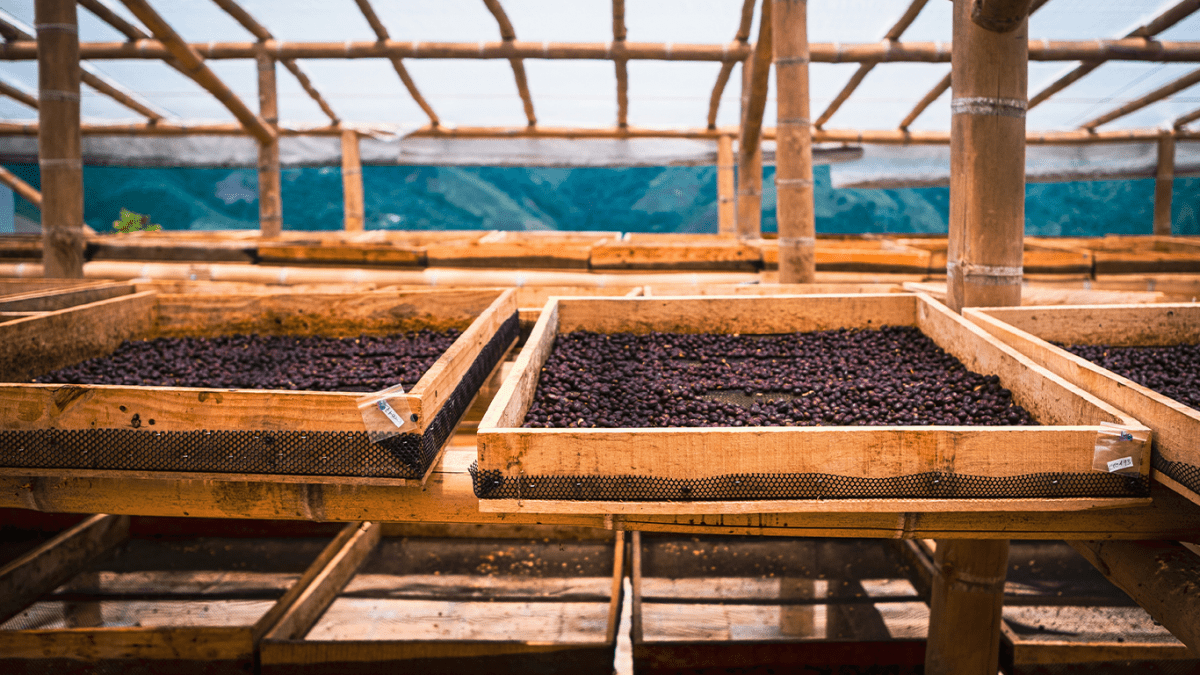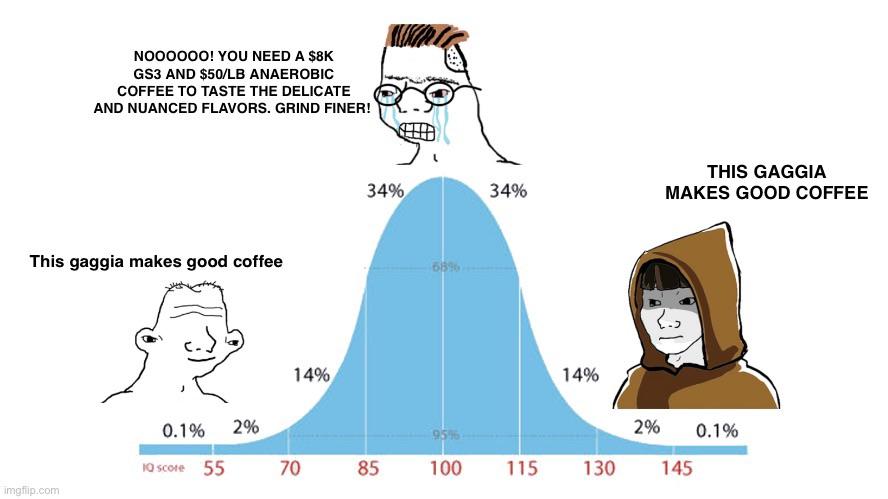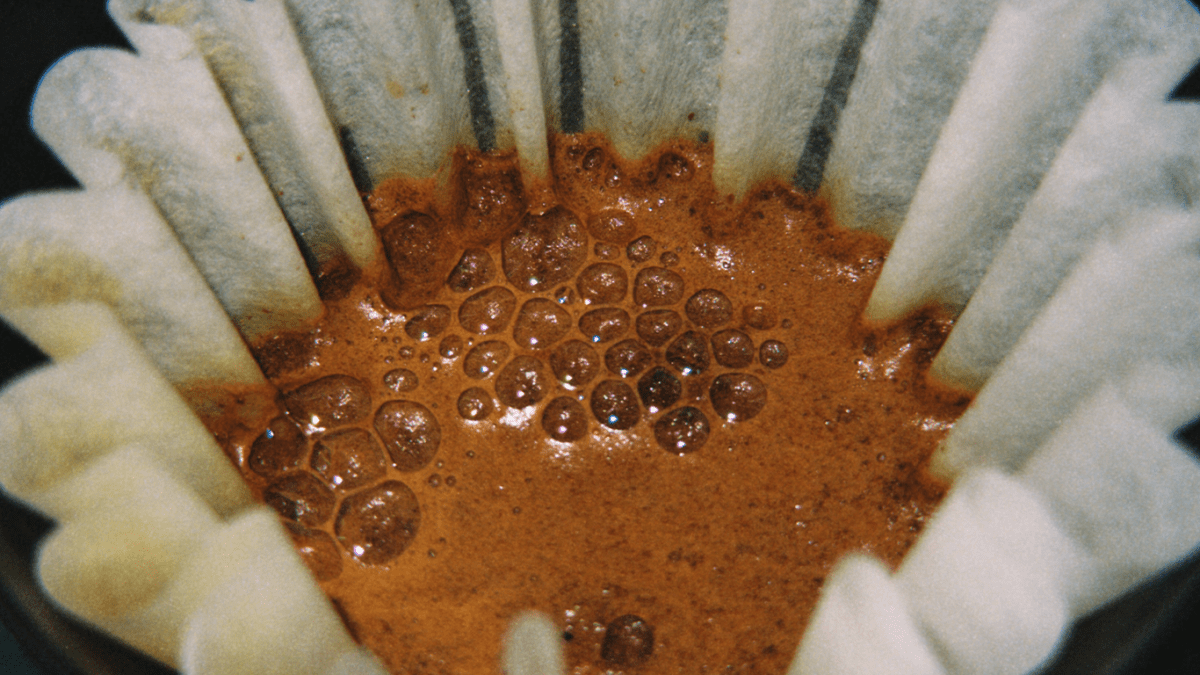DROP #4 SEPTEMBER 5, 2025 @ 12:00 PM EST
Experimental & Innovative Coffee Processing

The most interesting stuff in coffee right now isn’t happening in cafes or even at home...It’s happening at the farms.
Producers are messing with fermentation and pushing the boundaries of what coffee can taste like. Anaerobic fermentation, carbonic maceration, lactic fermentation, and co-fermentation are not just fancy coffee marketing BS. These processing methods are creating flavors that make you stop and think, Is this even coffee?
Not everyone is into it, and I totally get that.
Some of these coffees are wild, almost too wild.
But these methods are more than just experiments. They are giving producers a chance to create something new, something that stands out. And when done right (and responsibly!), that can mean better coffee for us and better pay for them.
Table of content
Introduction to Coffee Processing
Coffee processing is the journey of transforming raw coffee cherries into the beans ready for roasting. Traditional methods include washed, natural, and honey processes, each imparting distinct characteristics to the coffee. However, the quest for novel flavors has led producers to explore experimental techniques that push the boundaries of conventional processing.
For years, the coffee industry focused heavily on origin and roast level as the primary ways to influence flavor. But processing is proving to be just as important—if not more so—when it comes to unlocking unique taste experiences.
Producers are now using fermentation techniques borrowed from the wine and beer industries, applying more controlled environments, or experimenting with different types of yeasts and bacteria to manipulate the flavor development of the coffee.
Let's dive into some of these methods that are pushing the envelope...
Anaerobic Fermentation
Anaerobic fermentation involves fermenting coffee cherries in sealed, oxygen-free environments. This method allows specific microorganisms to thrive, influencing the coffee’s flavor profile.
How it Works:
- Harvesting: Ripe cherries are selectively picked
- Sealing: Cherries are placed in airtight fermentation tanks
- Fermentation: Microbes break down sugars in the absence of oxygen, producing unique flavor compounds
- Drying: Post-fermentation, beans are dried to halt microbial activity
Flavor profile
Anaerobic fermentation can yield flavors ranging from tropical fruits to spices, offering a complex and vibrant cup.
For a deeper dive into anaerobic fermentation, visit Daily Coffee News.
Carbonic Maceration
Adapted from winemaking, carbonic maceration ferments whole coffee cherries in a carbon dioxide-rich environment, leading to distinct flavor developments.
How it Works:
- Sealing: Whole cherries are placed in sealed tanks filled with CO₂.
- Fermentation: Intracellular fermentation occurs within the intact cherries.
- Processing: After desired fermentation, cherries are pulped, washed, and dried.
Flavor Profile
This method often results in bright, fruity notes with enhanced acidity and a wine-like character.
Learn more about carbonic maceration at Barista Magazine.
Lactic Fermentation
Lactic fermentation introduces lactic acid bacteria during processing, influencing the coffee’s acidity and mouthfeel.
How it Works:
- Fermentation: Cherries or de-pulped beans are fermented with lactic acid bacteria.
- Monitoring: Careful control of time and temperature is maintained.
- Drying: Beans are dried post-fermentation to preserve developed flavors.
Flavor Profile
Expect a creamy body with subtle acidity, often accompanied by sweet, fruity undertones.
Explore lactic fermentation further at Perfect Daily Grind.
Co-Fermentation
Co-fermentation involves fermenting coffee cherries alongside other fruits, spices, or botanicals, introducing external flavors into the beans.
How it Works:
- Addition: Selected additives (e.g., fruits, spices) are combined with coffee cherries.
- Fermentation: The mixture ferments together, allowing flavor compounds to infuse.
- Drying: Beans are separated and dried after achieving desired flavor integration.
Flavor Profile
Co-fermentation can impart exotic flavors, such as berry notes or spiced accents, creating a unique tasting experience.
Discover more about co-fermentation at Perfect Daily Grind.
Everything In Moderation
There’s no denying these methods are polarizing. Some people love the explosion of new flavors. Others think it’s too much, like the processing is trying too hard to steal the show.
The truth? Both sides are right.
These processes can add complexity, but they can also overwhelm what makes a coffee unique if you aren’t careful.
For producers, though, these methods are more than a flavor experiment. They are a shot at standing out in a market that can be brutally competitive. A great anaerobic or co-fermented coffee can command a much higher price than a standard washed lot, which makes a real difference.
It is not about ditching tradition or chasing trends. It is about knowing when to take a risk, when to lean into innovation, and when to hold back. When that balance is there, you get something rare. Something that moves coffee forward without forgetting where it came from.
Are these experimental processing methods safe?
Yes, when conducted under controlled conditions, these methods are safe and adhere to food processing standards.
Do these methods affect the caffeine content of coffee?
The primary impact is on flavor and aroma; caffeine levels remain largely unchanged.
Are co-fermented coffees considered flavored coffees?
Co-fermented coffees derive their unique flavors naturally during processing, unlike artificially flavored coffees where additives are introduced post-processing.
How can I brew these specialty processed coffees to best enjoy their flavors?
Methods like pour-over or French press are recommended to highlight the nuanced flavors resulting from these processing techniques.
Want To Try Coffees Like These?
We’re constantly sourcing experimental and innovative coffees from producers who are pushing the boundaries of what coffee can be. If you’re into exploring wild flavors and rare processing methods, sign up and we’ll keep you in the loop. Fresh drops, no subscriptions, no nonsense.






